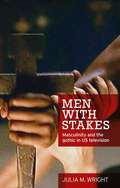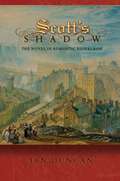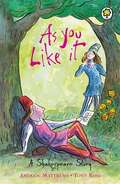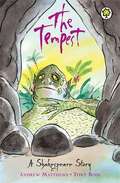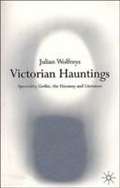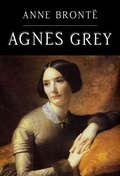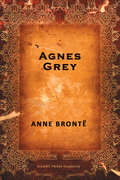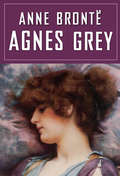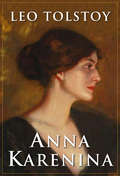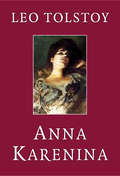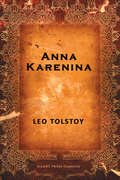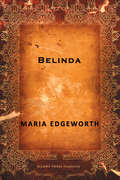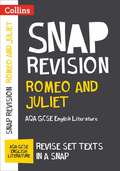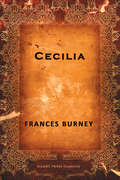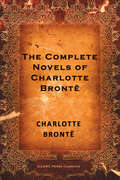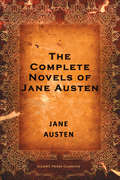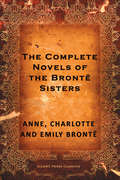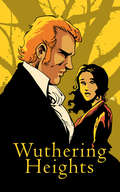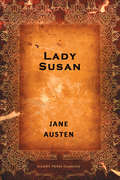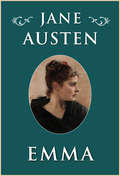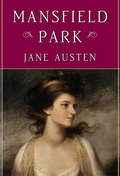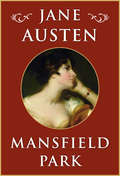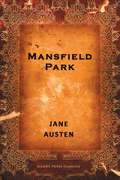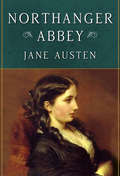- Table View
- List View
Men with stakes: Masculinity and the gothic in US television (PDF)
by Julia WrightMen with stakes builds on recent discussions of television Gothic by examining the ways in which the Gothic mode is deployed specifically to call into question televisual realism and, with it, conventional depictions of masculinity. Released from the mandate of realism to describe the world as it is supposed to be, television Gothic calls attention to the constructedness of gender – and therefore to the possibility of re-imagining men’s agency, authority and the legitimated forms of knowledge with which men are traditionally associated (science in particular). In this context, after an overview of Gothic television’s larger history, this study discusses in some depth seven series from the last two decades: American Gothic, Millennium, Angel, Carnivàle, Point Pleasant, Supernatural and American Horror Story.
Peace, war and party politics: The Conservatives and Europe, 1846–59 (PDF)
by Geoffrey HicksPeace, war and party politics examines the mid-Victorian Conservative Party’s significant but overlooked role in British foreign policy and in contemporary debate about Britain’s relations with Europe. The book considers the Conservatives’ response - in opposition and government - to the tumultuous era of Napoleon III, the Crimean war and Italian unification. Within a clear chronological framework, it focuses on ‘high’ politics, and offers a detailed account of the party’s foreign policy in government under its longest-serving but forgotten leader, the fourteenth Earl of Derby. It attaches equal significance to domestic politics, and incorporates a provocative new analysis of Disraeli’s role in internal tussles over policy, illuminating the roots of the power struggle he would later win against Derby’s son in the 1870s. Overall, it helps to provide us with a fuller picture of mid-Victorian Britain’s engagement with the world. This book will be of use to those teaching and studying Victorian politics and foreign policy at all levels in higher education.
Scott's Shadow: The Novel in Romantic Edinburgh
by Ian DuncanScott's Shadow is the first comprehensive account of the flowering of Scottish fiction between 1802 and 1832, when post-Enlightenment Edinburgh rivaled London as a center for literary and cultural innovation. Ian Duncan shows how Walter Scott became the central figure in these developments, and how he helped redefine the novel as the principal modern genre for the representation of national historical life. Duncan traces the rise of a cultural nationalist ideology and the ascendancy of Scott's Waverley novels in the years after Waterloo. He argues that the key to Scott's achievement and its unprecedented impact was the actualization of a realist aesthetic of fiction, one that offered a socializing model of the imagination as first theorized by Scottish philosopher and historian David Hume. This aesthetic, Duncan contends, provides a powerful novelistic alternative to the Kantian-Coleridgean account of the imagination that has been taken as normative for British Romanticism since the early twentieth century. Duncan goes on to examine in detail how other Scottish writers inspired by Scott's innovations--James Hogg and John Galt in particular--produced in their own novels and tales rival accounts of regional, national, and imperial history. Scott's Shadow illuminates a major but neglected episode of British Romanticism as well as a pivotal moment in the history and development of the novel.
As You Like It: A Shakespeare Story (PDF)
by Andrew Matthews Tony RossA wonderful retelling of Shakespeare's thrilling tale of love torn apart by history. With notes on Shakespeare and the Globe theatre and Love and Death in Anthony and Cleopatra. The tales have been retold using accessible language and with the help of Tony Ross's engaging black-and-white illustrations, each play is vividly brought to life allowing these culturally enriching stories to be shared with as wide an audience as possible.
The Tempest (PDF)
by Andrew Matthews Tony Ross William ShakespeareA charming retelling of this magical tale of power and justice. With Notes on Shakespeare and the Globe Theatre and Power in the Tempest. The tales have been retold using accessible language and with the help of Tony Ross's engaging black-and-white illustrations, each play is vividly brought to life allowing these culturally enriching stories to be shared with as wide an audience as possible.
Victorian Hauntings: Spectrality, Gothic, The Uncanny And Literature (PDF)
by Julian WolfreysVictorian Hauntings asks its reader to consider the following questions: What does it mean to read or write with ghosts, or to suggest that acts of reading or writing are haunted ? In what ways can authors in the nineteenth century be read so as to acknowledge the various phantom effects which return within their texts ? In what ways do the traces of such " ghost writing " surface in the works of Dickens,Tennyson,Eliot and Hardy ? How does the work of spectrality, revenance and the uncanny transform materially both the forms of the literary in the Victorian era and our reception of it today? Beginning with an expoloration of matters of haunting,the uncanny,the gothic and the spectral, Julian Wolfreys traces the ghostly resonances at work in Victorian writing and how such persistence addresses isues of memory and responsibility which haunt the work of reading. 'Taking the familiar genre of the Gothic as a point of departure and revisiting it through Derridean theory, Wolfreys' book, the first application of "hauntology" to the domain of Victorian Studies is a remarkable achievement. Wolfreys never reduces reading to instrumentality but remains alert to all the potentialities of the texts he reads with a great attention to their idiosyncrasies. Victorian Hauntings should bring a new tone to Victorian Studies, this clever book is quite perfect. - Jean Michel Rabate, Professor of English, University of Pennsylvania 'You'd have to be dead to know more about ghosts than Julian Wolfreys. ' Martin McQuillan, University of Leeds
Agnes Grey
by Anne BrontëA largely autobiographical work, Agnes Grey is the tale of a lowly governess in the employ of the English gentry. The novel examines the contempt and inhumanity shown towards the poor though educated women of the Victorian Age, whose only resource was to become a governess.
Agnes Grey
by Anne BrontëAgnes Grey is the story of a young woman who is forced by poverty to work as a governess for wealthy families while attempting to find love and happiness of her own. Set in early Victorian England, and based on Anne Bronte's own experiences, the novel explores Agnes's struggles with her cruel, uncaring employers, and a society that does not value a woman of her low position. Though less well known than the novels of her sisters, Emily and Charlotte, Anne's first book has been praised by critics for its wit and "near perfect prose."
Agnes Grey
by Anne BrontëA largely autobiographical work, Agnes Grey is the tale of a lowly governess in the employ of the English gentry. The novel examines the contempt and inhumanity shown towards the poor though educated women of the Victorian Age, whose only resource was to become a governess.
Anna Karenina
by Leo TolstoyAnna Karenina chronicles the doomed love affair between Anna and the dashing Count Vronsky. Married to a much older man, tragedy unfolds when Anna risks all in pursuit a more passionate and fulfilling life. The novel explores a diverse range of topics throughout its approximately one thousand pages. Some of these topics include an evaluation of the feudal system that existed in Russia at the time—politics, not only in the Russian government but also at the level of the individual characters and families, religion, morality, gender and social class.
Anna Karenina
by Leo TolstoyAnna Karenina chronicles the doomed love affair between Anna and the dashing Count Vronsky. Married to a much older man, tragedy unfolds when Anna risks all in pursuit a more passionate and fulfilling life. Often described as one of the greatest novels ever written, Anna Karenina explores a diverse range of topics throughout its approximately one thousand pages. Some of these topics include an evaluation of the feudal system that existed in Russia at the time—politics, not only in the Russian government but also at the level of the individual characters and families, religion, morality, gender and social class.
Anna Karenina
by Leo TolstoyAnna Karenina chronicles the doomed love affair between Anna and the dashing Count Vronsky. Married to a much older man, tragedy unfolds when Anna risks all in pursuit a more passionate and fulfilling life. Often described as one of the greatest novels ever written, Anna Karenina explores a diverse range of topics throughout its approximately one thousand pages. Some of these topics include an evaluation of the feudal system that existed in Russia at the time—politics, not only in the Russian government but also at the level of the individual characters and families, religion, morality, gender and social class.
Belinda
by Maria EdgeworthWhen Belinda Portman, a sheltered young woman, is sent to live with the worldly and charming Lady Delacour, their blossoming friendship is quickly tested by the lady's paranoia and jealously. And when Belinda departs to live with the Percival family, the rift between the two women seems irreparable. But when Lady Delacour, believing herself terminally ill, calls for Belinda's companionship, the young woman sets her own feelings aside and returns to reconcile with her former friend.
Collins Snap Revision: AQA GCSE English Literature Text Guide (PDF)
by Collins Uk Staff Collins Gcse StaffExam Board: AQA Level & Subject: GCSE English Literature First teaching: September 2015 First exams: June 2017 Revise set texts in a snap. Need extra help with 'Romeo and Juliet' ahead of the exam? Revise and review your understanding of the plot, characters, themes and context with this handy A5, exam-focused guide. With lots of practice and tips for your AQA exam, this 'Romeo and Juliet' Snap Revision Text Guide contains all the key information you need to get a top mark.
Cecilia or Memoirs of an Heiress
by Frances BurneyCecilia Beverely is a young woman who is set to inherit a fabulous fortune but there is a stipulation: she only receives the money if she marries a man who agrees to take her surname. While waiting to come of age and collect her inheritance, Cecilia is put under the care of three guardians with their own agendas and encounters a series of suitors only interested in her money. A scathing satire of upper-class society in 18th century England, Cecilia is a funny, thoughtful book celebrated in its time and continuously read ever since even inspiring the works of Austen and Thackeray.
The Complete Novels of Charlotte Brontë: Jane Eyre, Shirley, Villette, and The Professor
by Charlotte BrontëThis special ebook edition includes all of the novels written by Charlotte Bronte, one of the most recognized and remarkable authors of the nineteenth century: Jane Eyre, Shirley, Villette, and The Professor.
The Complete Novels of Jane Austen: Pride and Prejudice, Sense and Sensibility and others
by Jane AustenThis special ebook edition includes all of novels written by one of the most beloved authors of all time, Jane Austen: Love and Friendship and Other Early Works, Lady Susan, Sense and Sensibility, Pride and Prejudice, Mansfield Park, Emma, Northanger Abbey, and Persuasion.
The Complete Novels of the Bronte Sisters
by Anne Brontë Charlotte Brontë Emily BrontëThis special ebook edition includes all of the Bronte sisters' published works: Agnes Grey, and The Tenant of Wildfell Hall by Anne Bronte, Jane Eyre, Shirley, Villette, and The Professor by Charlotte Bronte, and Wuthering Heights by Emily Bronte.
Wuthering Heights
by Emily BrontëThe first and only novel written by Emily Bronte during her short career, Wuthering Heights is a tale of a passionate but jealous love affair between the mysterious Heathcliff and free-spirited Catherine Earnshaw. Far from a traditional romance, the novel does not shy away from portraying the destructiveness and resentment that can arise from love. Because of its stark portrayal of Heathcliff and Catherine's relationship and the cruelty and suffering that stems from it, Wuthering Heights was highly controversial when published originally in 1847. Now it is considered, alongside Charlotte's Jane Eyre, as the most enduring of all the Bronte Sisters works.
Lady Susan
by Jane AustenPublished in 1871, (long after Jane Austen's death in 1817) and written in 1794, Lady Susan is told through letters, and is the story of a woman's quest to find husbands for herself and her daughter, all while maintaining a relationship with a married man. The heroine is quite different than those from novels of the time, and is treated quite mildly for her adultery (which differs from the majority of Austen's heroines). Lady Susan is also a dynamic character—attractive, witty and quite intelligent (if manipulative at times). As with most of Austen's other work Lady Susan has been adapted for stage and screen on multiple occasions.
Emma
by Jane AustenEmma is perhaps Jane Austen's most complex character. Her hubris—and capacity for self-delusion—in the (mis)management of other people's affairs sets the table for a satisfying comedy of self-discovery.
Mansfield Park
by Jane AustenImpoverished Fanny Price is sent to live with her aunt and uncle at Mansfield Park. Clever, studious, and a gifted writer, Fanny is soon possessed of beauty as well and comes to the attention of a neighbor, Henry Crawford. Full of wit and romance, this is classic Jane Austen.
Mansfield Park
by Jane AustenImpoverished Fanny Price is sent to live with her aunt and uncle at Mansfield Park. Clever, studious, and a gifted writer, Fanny is soon possessed of beauty as well and comes to the attention of a neighbor, Henry Crawford. Full of wit and romance, this is classic Jane Austen.
Mansfield Park
by Jane AustenThe heroine of Mansfield Park is Fanny Price. She's been raised by her wealthy aunt and uncle, but has no money and no real marital prospects herself. When family friends, the lively and appealing siblings Henry and Mary Crawford, come to stay, Mansfield Park is transformed into a different place. Henry takes an interest in Fanny, and so begins a series of romantic entanglements between Fanny, her cousins, and the Crawfords. It has been argued that this is the most controversial of Austen's novels, and Fanny is a much discussed character.
Northanger Abbey
by Jane AustenYoung Miss Catherine Morland's obsession with Gothic novels leads to misunderstandings in matters of the heart.
